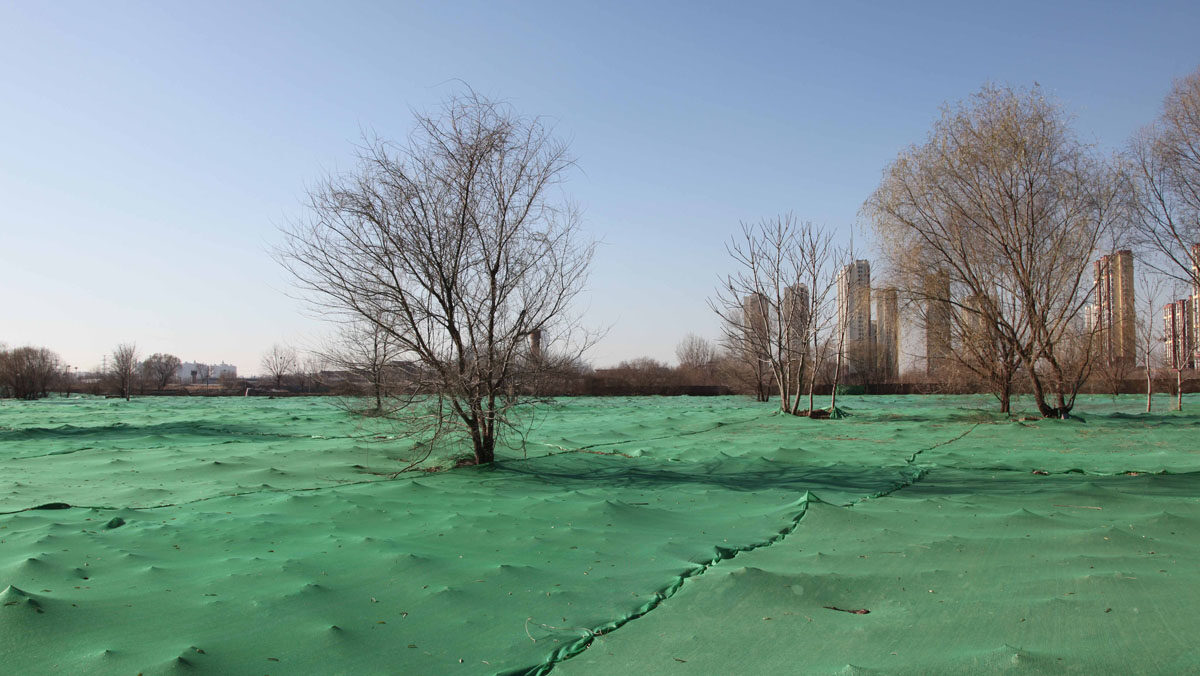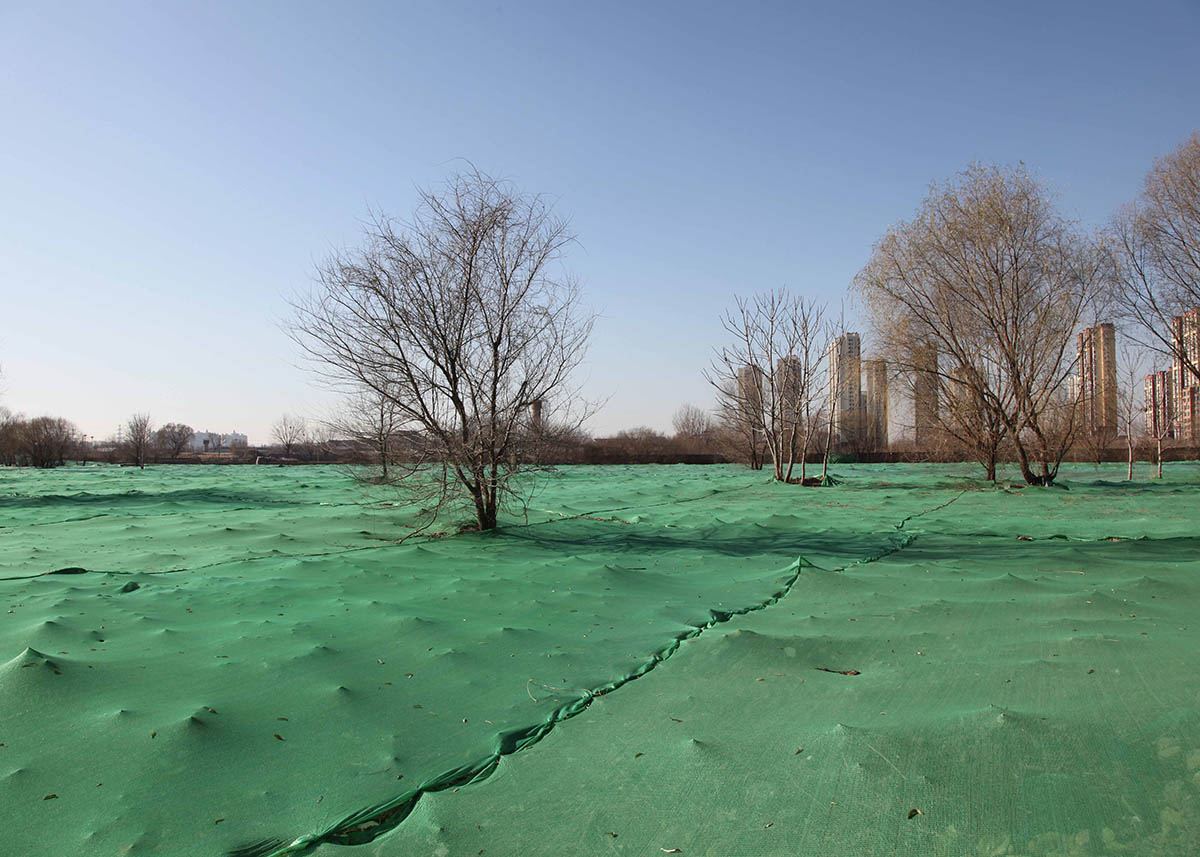
In her interdisciplinary practice, Raidel explores the profound transformations occurring in China due to its unprecedented growth and rapid urban changes. She pushes the boundaries of documentary filmmaking, experimenting with new modes of storytelling and innovative methods. Her practice is showcased in her latest book titled „Of Haunted Spaces,“ intertwines a hybrid art film with performative interventions in and on Chinese Ghost cities. Raidel also presents captivating photography captured during her extensive research trips, where she skillfully stages performative acts within these urban settings. Raidel’s work serves as a poignant exploration of the evolving urban landscape, encapsulating the complexities and tensions associated with the forces of modernization and cultural identity. By shedding light on these themes, she invites viewers to reflect on the multifaceted aspects of contemporary societies and the visual representation of these experiences.
What is your first approach to the work? How would you describe your practice?
I am driven by my curiosity for other places and people, and for most of my life, I have lived abroad. I have created my films in Africa, China, and I am currently residing in Singapore. My initial approach involves researching and exploring sites, taking photographs, and embarking on these research trips. However, these journeys often lead me to unexpected outcomes due to the limitations and conditions I encounter as a filmmaker. Interestingly, these limitations have become a catalyst for experimentation. As my practice evolved, I began staging settings, collaborating with performers, and collecting acoustic and visual material that would later be reenacted with actors. This approach has transformed my work into a hybrid form that lies somewhere between documentary and fiction. Similar to documentary theater, I operate on the streets, employing improvisation techniques and equipping my performers with small stories to enact during our film shoots. Within this exhibition, I am showcasing photographs captured during my research trips to various locations in China while working on my film “A Pile of Ghosts” (2021). For me, there is no distinction between photography and cinematography, as both mediums are intertwined. Many of my films resemble tableaux and serve as stages for performative acts. Overall, my creative process embraces a fusion of documentary elements and fictional elements, capturing the essence of the places I explore and incorporating performative elements to bring them to life.
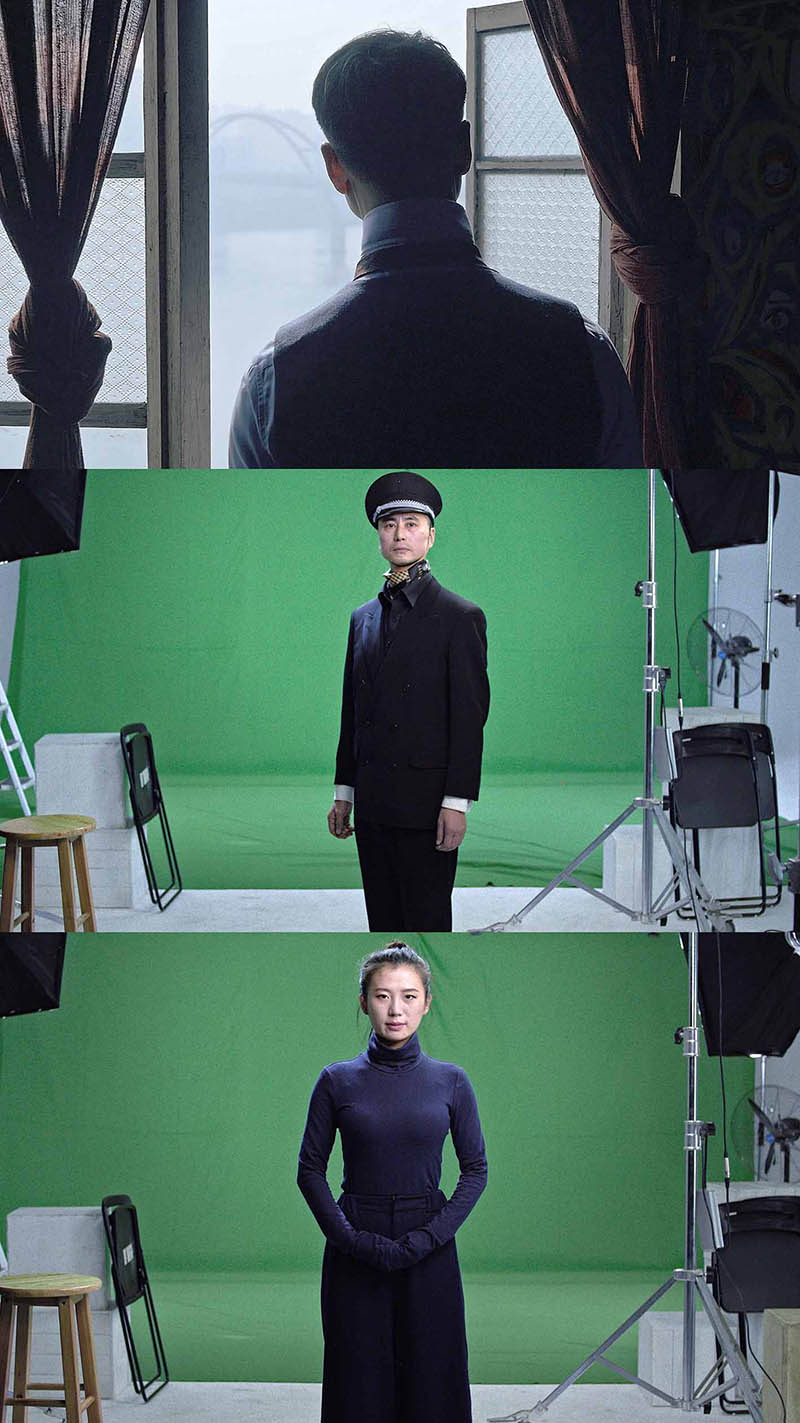
Video, Film, and Installation. What is so riveting in these mediums?
Video, film, and installation demand different presentation settings: the cinema, black box, or expanded cinema. What distinguishes moving images from still images is the presence of sound. After all, what would these images be without the ability to hear them? I find resonance in Trinh T. Minh-ha’s quote, “to hear an image and to see sound.” Sound creates an opening for an additional narrative, a sub-narrative. This is precisely why one of my films is titled “Subverses”; I am constantly seeking new methods of storytelling. In my work, I incorporate pop songs, performative expressions, and a variety of texts often sourced from advertisements, propaganda, and real estate sales promotions. These texts become integral parts of my scripts, and the messages they convey are embodied by performers. Poetry, songs, slogans, ringtones, and even telephone ring tones act as carriers of memories and references. I enjoy playing with these references, evoking them in the viewer’s mind. Anything that cannot be shown or articulated visually can be conveyed through the realm of sound. In this way, my films are like still images that can be listened to.
You have lived in many different big cities. How does it influence your work?
I have always been intrigued by architecture and urbanization. In fact, I initially began my journey as an architectural photographer before transitioning to working with moving images. This enduring curiosity for cities, particularly Asian cities, has greatly influenced my artistic perspective. Living in these dynamic places, I witness the ongoing changes on a daily basis, and throughout the years, I have witnessed these cities expanding and evolving. My artistic practice serves as a reflection of my own living conditions. Through my work, I strive to comprehend and make sense of the environment in which I reside. It is a means for me to explore and navigate the intricacies of these urban landscapes, capturing their essence and offering insights into the complex relationship between humans and the built environment.
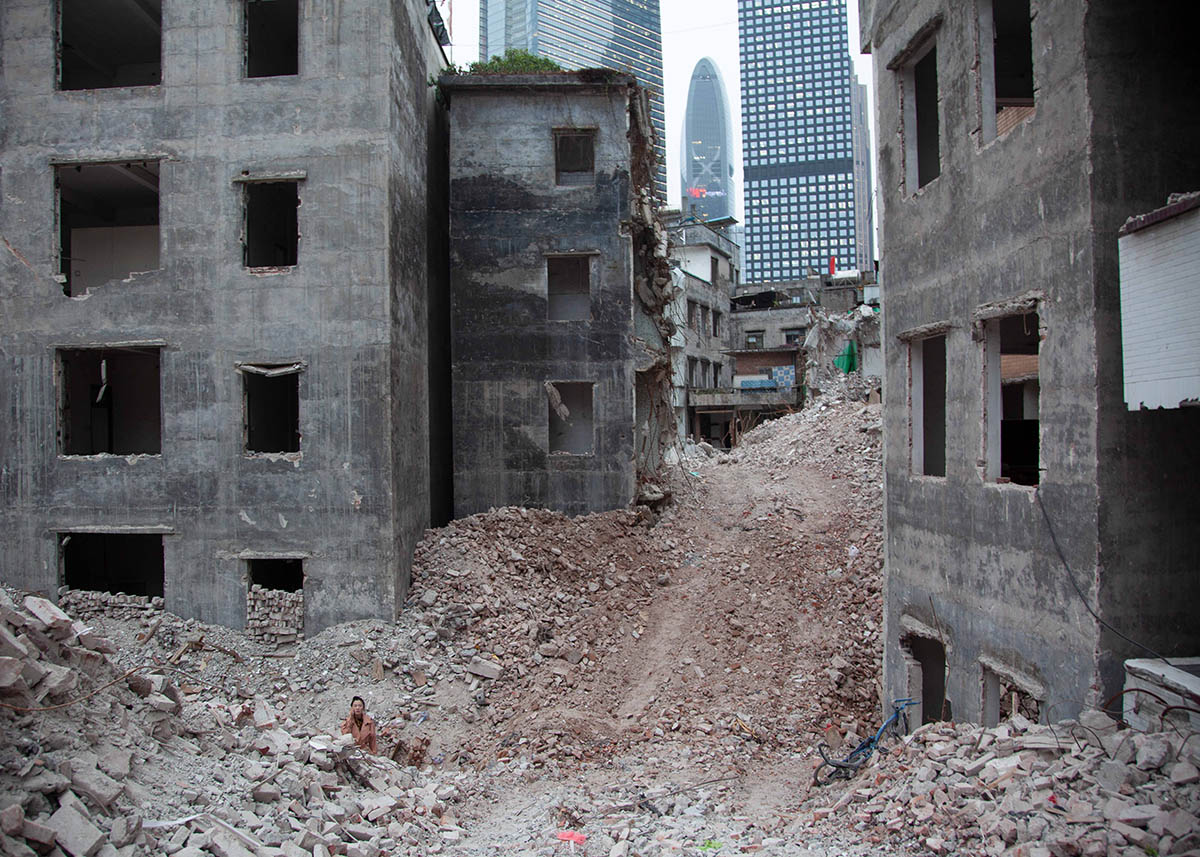
How have your experiences in Taiwan and China influenced your work?
I am an avid enthusiast of Chinese language cinema, particularly Taiwan New Wave and Chinese Independent cinema. Throughout my artistic journey, my work has consistently evolved in parallel with my research in film. I have had the privilege of conducting interviews with Chinese and Taiwanese filmmakers, and my thesis focused on the Malaysian-born arthouse director Tsai Ming-Liang. Moreover, I have published works discussing cinema from East and Southeast Asian regions. It is not only these countries and places that have influenced my work, but also the art of cinema itself. My academic career has flourished as a result of my deep interest in film. As a filmmaker, my own work has been significantly shaped by the films I have encountered. What I have witnessed on screen has permeated my reality. To illustrate, consider Tsai Ming-Liang and his film „The River“ (1997), a story characterized by minimal dialogue, set in Taipei, plagued by perpetual rain, broken water pipes, flooding, and dysfunctional family dynamics. Initially, I perceived it as a mere artistic expression, almost like a joke. However, once I found myself living in Taipei, the city felt akin to a Tsai Ming-Liang film. This, in essence, is my reality—a deep appreciation for cinema’s ability to portray reality within the realm of fiction, blurring the boundaries between imagination and lived experience, ultimately rendering it more genuine than one can fathom.
How important is the political message of your work to you?
My political messages are not presented in a forefront manner, but rather intricately woven into the visual and auditory aspects of my works. I envision my films as thought-provoking models that prompt viewers to contemplate the circumstances of our existence. Within the acoustic dimension, as well as through the composition and framing of images, I have the ability to embed political messages. Even moments of silence or lingering shots possess the potential to evoke powerful political narratives. This approach is influenced by the experiences of filmmakers who navigate censorship restrictions yet manage to create impactful films that transform political messages into poetic expressions.
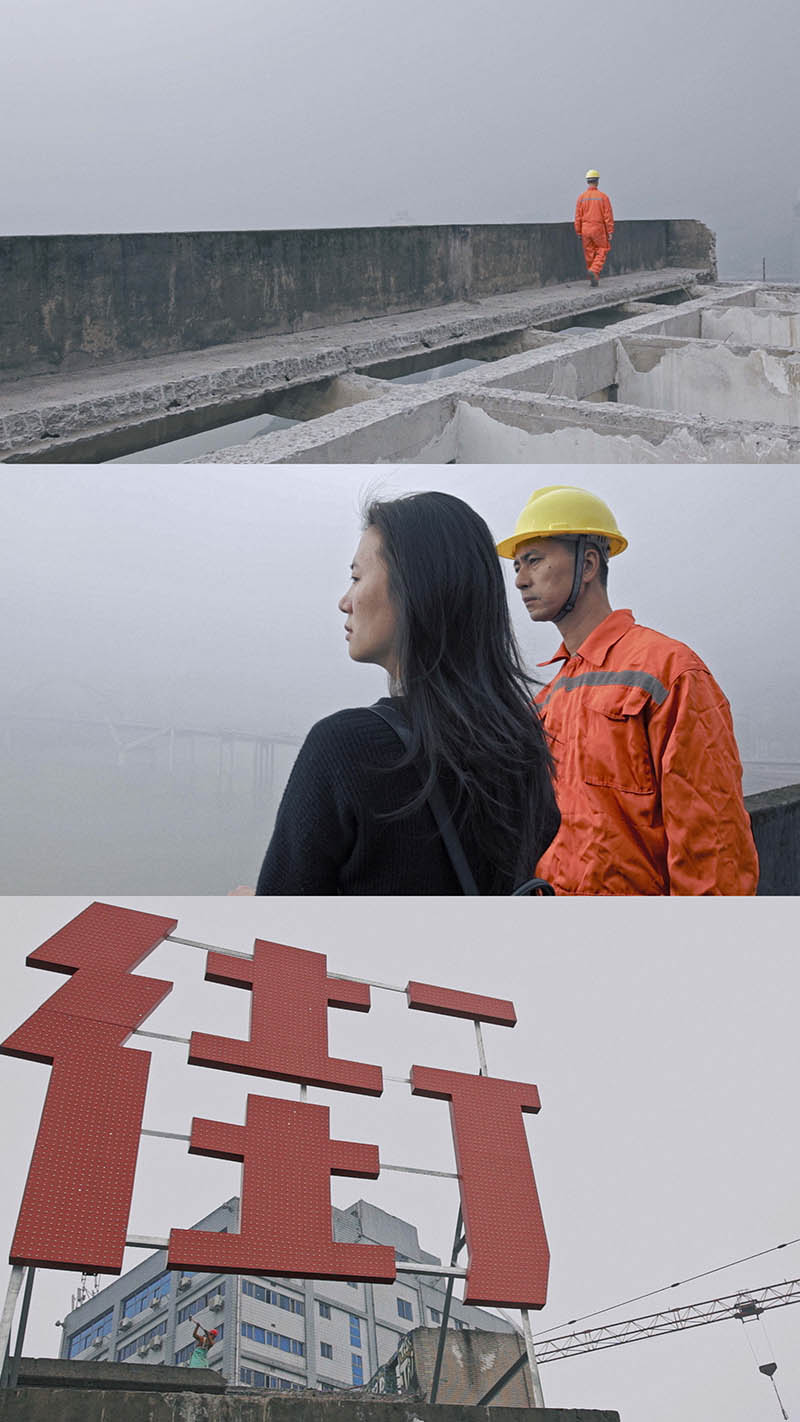
Since 2019, you have been teaching at the Nanyang Technological University of Technology Singapore. How did that come about?
I have been deeply engaged in an academic trajectory for quite some time now. As I mentioned before, my filmmaking and artistic practice align closely with my academic research. In fact, I completed my PhD thesis on the films of Tsai Ming-Liang. Additionally, I had the privilege of serving as a post-doctoral researcher at Academia Sinica Taipei, specifically at the Institute for Chinese Literature and Philosophy. During my time there, I had the valuable opportunity to organize conferences and publish a book titled „The Politics of Memory in Sinophone Cinemas and Image Culture,“ which was part of the Routledge Contemporary China Series. Back in Austria, I was honored to receive the Elise Richter PEEK grant from the Austrian Science Fund. This highly competitive grant is specifically designed to support female artists who aspire to pursue an academic career. Step by step, one opportunity led to another, and when the position of a professorship became available, I seized the moment and applied at NTU Singapore, ultimately securing the position. I am grateful for the intertwining of my creative and scholarly pursuits, as they have allowed me to delve deeply into my passions, contribute to academic discourse, and continue to expand my horizons within the field.
In June, your work will be featured in the exhibition „Fächertanz“ at Loft8 Gallery in Vienna. Could you tell us more about it?
The curator Alexandra Grimmer approached me to participate in this exhibition as part of the Foto Wien festival, an event dedicated to photography. For this exhibition, I am showcasing photographs captured during my research trips throughout China. In these images, I employ performers as active participants who explore and observe the present phenomena, such as urban transformations. Through their wandering and movement within staged settings, we are able to witness the surroundings and gain a sense of reality. These photographs represent the culmination of my research efforts over the past years. Additionally, this exhibition provides an exciting platform to present my new book, titled „Of Haunted Spaces: The Films of Ella Raidel, Cinema, Heterotopias, and China’s Hyperurbanization.“ The book, edited by Ute Meta Bauer and published by NTUCCA Contemporary Art Center Singapore, features contributions from esteemed figures such as postcolonial theorist Itty Abraham, Austrian film curator and architect Marlene Rutzendorfer, and Hong Kong curator Yu Weiying. This exhibition offers a wonderful opportunity to showcase not only my photography work that complements my filmmaking, but also to present the book as a reader that encompasses my artistic practice and theoretical exploration.
Can you let us know what projects or exhibitions you have planned for the future?
I am currently working in the realm of 360° video, exploring its potential for performative expression within staged settings. One notable project in this medium is my VR film „The Seven Step Verse“ (2022), which explores the iconic modernist shopping malls of Singapore. Through seven distinct scenarios, sites, and intervention acts, I aim to unveil the hidden dimensions and unrecognized aspects of everyday life. Within the film, I delve into themes of alienation, fragmentation, migration, and the various impacts of modernism. In continuation of this approach, I am working now on a project for the Cultural Capital Europe in the Salzkammergut 2024. It is an immersive storytelling project on a train and a 360° film. Collaborating with Petra Ardai, an experienced theatre director specializing in immersive storytelling, film curator Marlene Rutzendorfer, and composer Sander Saarmets, we are crafting a cinematic narrative that can be experienced as an acoustic play aboard the train. I am particularly focused on the sound design, which possesses the ability to evoke vivid images within the minds of the audience. By exploring new technologies and pushing the boundaries of cinema, I aim to expand the notion of storytelling into new, immersive dimensions.
Ella Raidel – www.ellaraidel.com
Exhibition: Fächertanz: Ella Raidel und Zong Ning. Curated by Dr. Alexandra Grimmer with BMCA Collection
Exhibition duration: 1.6.-20.6. 2023
Vernissage: 31. Mai 2023, 18:00
Book Presentation Ella Raidel: 2.6.2023, 18:00
Opening hours: Di-Fr 13:00-18:00, Sa 11:00-15:00
Address and contact:
Loft8 Gallery
Radetzkystr. 4, 1030 Vienna
www.loft8.at




